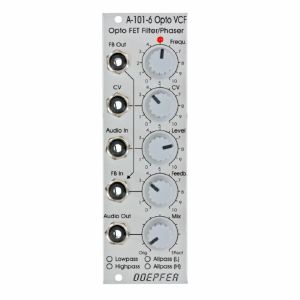Bestselling DJ equipmentBestselling DJ accessoriesLatest DJ equipmentNEWLatest DJ accessoriesNEWDJ headphonesDJ turntablesDJ Decks | CD & USB DJ DecksDJ mixersDJ controllersDecksavers + coversDJ cartridgesDJ stylusesRecord boxesRecord bagsVinyl cleaningVinyl sleeves
DJ equipment
Styluses, cartridges & headshells
Vinyl DJ accessories
Digital DJ accessories
Record bags, boxes & trolleys
Vinyl DJ equipment bags & cases
Digital DJ equipment bags & cases
Vinyl sleeves, cleaning & storage
Slipmats
Decksavers & DJ equipment covers
PA & live sound
DJ lighting
DJ spare parts
Hi-Fi
Audio cables & adapters
MIDI & USB cables
Power supplies & cables
Computer accessories
DJ gifts & gadgets
Shop by brand
Gift vouchers
45 RPM Adapters | 7 Inch Record AdaptersDJ AccessoriesDJ Earplugs | DJ Hearing ProtectionPhono PreampsVinyl sleevesVinyl Record Weights | Turntable Weights NEWDJ Shoulder Bags | Vinyl Shoulder BagsSlipmatsDJ T-Shirts & SweatshirtsDJ Lamps | DJ Torches & AccessoriesTurntable AccessoriesVinyl cleaning
CD Cases | CD Carry & Flight CasesCD WalletsDecksavers + DJ equipment coversDJ Backpacks | Backpacks For DJ EquipmentDJ Controller Bags | Bags For DJ ControllersDJ Controller Cases | DJ Controller Flight & Carry CasesDJ Equipment Hard CasesDJ Workstations | Workstation Desks For DJsHeadphone Bags | Headphone PouchesHeadphone CasesDJ Laptop Bags | Sleeves For DJ LaptopsDJ Laptop Stands | Laptop Stands For DJs
In ear headphonesHiFi Amplifiers | HiFi Stereo AmpsHi-Fi Cartridges | Phono CartridgesHiFi HeadphonesHiFi SpeakersTurntable Styluses | Hifi StylusesHiFi Turntables | Record Players For HiFiNoise Cancelling HeadphonesPortable Headphones | Lightweight HeadphonesPortable Speakers | Portable Bluetooth SpeakersPortable turntables | USB turntables
1200 PlatesAcc SeesAIAIAIAllen & HeathAlphaAmerican AudioAudio InnovateAudio TechnicaBehringerCitronicDecksaverDenon DJDJ TechDr SuzukiEclerGeminiGoldringMackieMagmaMasterSoundsMobile FidelityMukatsukuNagaokaNative InstrumentsNumarkOdysseyOmnitronicOrtofonPioneer DJProjectQTXRaneReloopRolandSefourSennheiserSeratoShureStantonStokyoSubPacTechnicsTonarUDGVinyl StylZomo
Bestselling studio equipmentBestselling studio accessoriesLatest studio equipmentNEWLatest studio accessoriesNEWSynthesisersSynth modulesDrum machinesMIDI controllersMIDI keyboardsAudio InterfacesStudio monitorsStudio headphonesSamplersSequencersEffects unitsEffects pedals
Synthesisers & synth modules
Drum machines
MIDI controllers & keyboards
Samplers & sequencers
Audio interfaces
Studio monitors & mixers
Studio headphones
Effects units & pedals
Compressors limiters & gates
Music software & VST instruments
Microphones
Studio amplifiers & preamps
Digital recorders
Guitar accessories
Cables & adapters
Cases, storage & stands
Studio accessories
Computer accessories
Gift vouchers
All microphonesVocal Recording MicrophonesInstrument MicrophonesMicrophones For Mobile Phone Recording | iOS & AndroidWireless Microphones | Wireless Microphone SystemsMeasurement MicrophonesGooseneck microphonesHeadworn Microphones | Headworn Microphone SystemsCamera Microphones | External Microphones For CamerasLavalier MicrophoneShotgun MicrophonesRecording Studio Microphone Accessories
Studio Soundproofing | Acoustic Soundproofing Panels NEWAudio Cable Testers NEWAudio Patchbays | Digital Audio Patchbays NEWCD Cleaning Kits & EquipmentCD Jewel Cases & CD SleevesDecibel Meters | Studio Sound Level Meters NEWDigital Recorder AccessoriesMIDI converters & accessoriesRecording Studio AccessoriesStudio Equipment Replacement & Spare PartsRecording Studio Vocal Booths | Vocal Isolation Booths NEW
Vinyl care & hi-fi
BestsellingVinyl cleaningVinyl sleevesHifi StylusesHi-Fi CartridgesTurntable HeadshellsVinyl storage45 RPM AdaptersVinyl Record WeightsSlipmatsTurntable AccessoriesVinyl FramesHiFi TurntablesPortable turntablesHiFi SpeakersHiFi HeadphonesIn ear headphonesPortable HeadphonesNoise Cancelling HeadphonesPhono PreampsRecord bagsRecord boxesCD Jewel Cases & CD SleevesDJ BooksMusic Magazines
100% Secure Shopping
Studio equipment
Our full range of studio equipment from all the leading equipment and software brands. Guaranteed fast delivery and low prices.
100% Secure Shopping
DJ equipment
Our full range of DJ equipment from all the leading equipment and software brands. Guaranteed fast delivery and low prices. Visit Juno DJ
Filter
Equipment
Format
Featured
Tags: VCF module
Products tagged as VCF module
Options
Date: Old to new
- Bestseller:
- High to low
- Artist:
- A to Z
- Z to A
- Title:
- A to Z
- Z to A
- Label:
- A to Z
- Z to A
- Date:
- Old to new
- New to old
- Price:
- Low to high
- High to low
- Label rank:
- Low to high
- High to low
Items 1 to 1 of 1 on page 1 of 1
Doepfer A-101-6 6-Stage VC Opto-FET Filter & Phaser Module (silver) (filter/phase shifter/effect synth module)
Cat: 682323 Rel: 26 Mar 18
6-stage VC Opto-FET filter/phaser - 8HP
Notes: A-101-6 is a new filter module that uses so-called opto FET's to control the filter frequency. Opto FET's are very similar to Vactrols, but use light dependent field effect transistors (FET's) instead of light dependent resistors (LDR's). An opto FET is a combination of a light-dependent FET and an LED, both put into a small light-proof case. The advantage, compared to vactrols, is a much faster response of opto FET's compared to LDR's - this allows much faster attack/decay times and even FM effects.
The variable resistors corresponds to the opto FET. The brightness of the Opto FET LED's, and consequently the filter frequency, can be adjusted manually (Frequ. control) and controlled by means of an external control voltage (CV) with attenuator. The LED at the front panel reflects the LED brightness inside the opto FET's.
The type of filter is chosen by jumpers on the PC board (factory setting: low pass). The type of filter determined by the jumpers positions can be marked by means of a water-resistant felt pen at the front panel.
The resonance is controlled by the Feedback control up to self-oscillation. By means of a trimming potentiometer the maximal feedback can be adjusted. High feedback values can be used mainly in the all-pass mode to obtain very extreme self-oscillation sounds. Even an external feedback signal can be used instead of the internal feedback connection (FB In socket). Whenever the filter type is changed by means of the jumpers the trimming potentiometer for the maximal feedback has to be re-adjusted.
The Mix control is used to pan between the original signal (CCW position) and the effect signal (CW position). In filter mode (LP/HP) this control is usually set fully CW. In the all-pass modes one obtains phasing sounds at centre position or "pure" all-pass sound in fully CW position.
… Read moreThe variable resistors corresponds to the opto FET. The brightness of the Opto FET LED's, and consequently the filter frequency, can be adjusted manually (Frequ. control) and controlled by means of an external control voltage (CV) with attenuator. The LED at the front panel reflects the LED brightness inside the opto FET's.
The type of filter is chosen by jumpers on the PC board (factory setting: low pass). The type of filter determined by the jumpers positions can be marked by means of a water-resistant felt pen at the front panel.
The resonance is controlled by the Feedback control up to self-oscillation. By means of a trimming potentiometer the maximal feedback can be adjusted. High feedback values can be used mainly in the all-pass mode to obtain very extreme self-oscillation sounds. Even an external feedback signal can be used instead of the internal feedback connection (FB In socket). Whenever the filter type is changed by means of the jumpers the trimming potentiometer for the maximal feedback has to be re-adjusted.
The Mix control is used to pan between the original signal (CCW position) and the effect signal (CW position). In filter mode (LP/HP) this control is usually set fully CW. In the all-pass modes one obtains phasing sounds at centre position or "pure" all-pass sound in fully CW position.
Tags: Filter module | Effects module | VCF module | Phaser module
1 in stock $107.24
Click for better price!
or call +44 20 7424 1960
quote 682323
quote 682323
Items 1 to 1 of 1 on page 1 of 1
Options
Help & Information
OrderingOrdering ProblemsFAQContact Us (Customers)Contact Us (Suppliers)About JunoJuno DailyNew This WeekDJ & Studio StoreTagsFeedbackPrivacy PolicyReturns & refundsTerms and ConditionsFinanceJuno Vinyl DistributionJuno Vinyl WholesaleJuno Marketing and PR departmentPromote your label / releasesDepartments
Juno DailyComing soonGift certificatesClassicsCreate a chartRepressesFull label listTop LabelsMy Juno
My artists and labelsMy Back-In-Stock AlertsMy AccountMy WishlistMy ChartsMy New Release E-mailsMy Order HistoryMy Coming Soon Alerts100% Secure Shopping
DJ Mag Best Of British
Best Music Store: 5 time winners
© 1996 - 2025 Juno Records
All image and audio content is used by permission of the copyright holders or their agents, and/or according to fair dealing as per the UK Copyright, Designs and Patents Act 1988.
We'd like to know what you think of Juno's website. Please send us your comments and suggestions via our feedback page.
This website uses cookies
We use cookies to personalise content and ads, to provide social media features and to analyse our traffic. We also share information about your use of our site with our social media, advertising and analytics partners who may combine it with other information that you've provided to them or that they've collected from your use of their services.Necessary
Statistics
Marketing

 USD
USD





